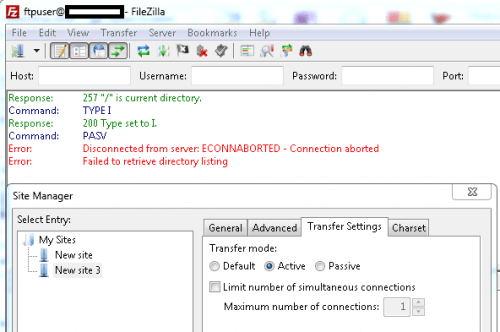The success of a software release hinges not only on solid project management, precise requirements gathering, sound architecture, and diligent development and testing—but also on how thoroughly the product is prepared for production deployment. A critical component in this process is the staging environment—a mirror of the live environment used to validate the end-to-end functionality before go-live.
A properly configured staging environment helps catch issues early, boosts confidence across teams, and ensures smoother cut-over during production release. This guide walks you through best practices for setting up a staging environment for UAT (User Acceptance Testing), helping you minimize surprises on go-live day.
Below are some of key notes that should be taken care of while preparing Staging environment for UAT:
1. Environment Setup: Match Production As Closely As Possible
1.1 Software configuration
Ensure the OS, web server, backend framework, libraries, and third-party integrations match production exactly, including minor version numbers. Even slight differences in versions can cause unpredictable behavior, making bugs hard to trace.
1.2 Hardware configuration
If replicating production hardware isn’t feasible due to budget constraints, opt for a scaled-down version—but one that realistically reflects the expected user load. Perform load testing to validate this scaled setup.
1.3 Dummy Accounts for Third-Party Integrations
Use sandbox credentials or test accounts for services like Google Analytics, payment gateways, comment systems (e.g., Disqus), and CRM integrations. This avoids polluting live data and ensures testing accuracy.
2. Security and Access Control
2.1 Restrict Public Access
Prevent the UAT site from being indexed or accessed before launch. You can:
Enable basic HTTP authentication.
Restrict access by IP or geographic location.
Use VPN-based access for remote QA or stakeholders.
Early exposure of a campaign or app can spoil the launch and give competitors an edge.
2.2 Prevent Crawlers from Indexing Staging URLs
To avoid duplicate content issues and SEO penalties:
Add a
<meta name="robots" content="noindex">tag to all staging pages.Include
Disallow: /inrobots.txt.Password-protect staging with
.htaccessor web server configuration.
3. Data Synchronization Strategy
3.1 Use a Copy of Production Database
Use production data to simulate real-world user journeys and interactions. If the product is new, request representative sample data from stakeholders.
3.1.1 Mask Sensitive Information
Before importing, sanitize PII (personally identifiable information) and financial data:
Email addresses
Phone numbers
Credit card details
Government-issued IDs
3.1.2 Document and Automate the Masking
Keep a data dictionary of sensitive fields.
Use automated scripts to replace real data with mock values.
Ensure GDPR, HIPAA, or local privacy law compliance if applicable.
3.1.3 Replace Production Domain References
Ensure all absolute URLs point to staging instead of production. Test all GET/POST forms and media to prevent leaks to production systems.
3.1.4 Update Email Addresses
Replace production email recipients with test inboxes to avoid sending emails to real users. Tools like Mailtrap, Mailhog, or custom test mailboxes help validate outbound communications.
4. Code Management Best Practices
4.1 Deploy the Same Build to Staging and Production
The exact build tested in UAT must go to production. Creating a new build for production invites risk and invalidates UAT outcomes.
4.2 Use Environment-Specific Configuration Files
Utilize environment-based config files (e.g., web.config, appsettings.json, .env, wp-config.php) to manage settings like:
API endpoints
Database connection strings
Feature flags
Avoid hardcoding values that differ by environment.
5. Use Host Entries for Domain Simulation
Use
hostsfile overrides to map the production domain to a local IP for testing.This allows testing of domain-based behavior without DNS changes or exposing UAT URLs publicly.
Ideal for verifying relative/absolute URL handling, HTTP redirects, and SSL configurations.
Learn more about host files here
6. Use Stubs or Mocks for Third-Party Integrations
Replace external service calls with mock/stub components to isolate your app’s behavior.
Simulate both success and failure scenarios by modifying responses.
Helps test how your system reacts to delays, timeouts, or invalid data without relying on external systems.
7. Focus on Functional and Integration Testing
UAT should concentrate on validating business logic, workflows, and integrations, not exploratory or performance testing.
Any defects found should undergo root cause analysis and either be fixed or justified before release.
Avoid non-critical enhancements or edge cases unless they impact launch readiness.
8. Document All Configuration Settings
Maintain a version-controlled configuration document or checklist.
List all environment-specific settings, secrets, and third-party credentials required.
This helps replicate the setup in production and avoids delays due to missing settings.
9. Follow Strong Configuration and Code Management Practices
Enforce proper version control, change management, and branching strategies (e.g., GitFlow)
Avoid making changes directly in staging or production environments.
Always:
Use the same build in UAT and Production.
Use CI/CD pipelines with environment promotion stages
- Separate config from code using dedicated secrets management tools like Vault or environment variables. Use environment-specific configuration files (e.g.,
web.config,wp-config.php) to manage differences without touching the core codebase
10. Test Rollback and Recovery Plan
Simulate rollback scenarios in staging to ensure your system can recover if something goes wrong in production.
Maintain a tested rollback script or snapshot for quick restoration.
Validate database versioning, backup integrity, and log rollback options during UAT phase.
Key Takeaways
| Best Practice | Why It Matters |
|---|---|
| Mirror production closely | Catch environment-specific bugs early |
| Mask sensitive data | Avoid data breaches during testing |
| Block public and crawler access | Prevent premature exposure and SEO issues |
| Use stubs for integrations | Isolate your app from unstable third-party services |
| Document configuration settings | Ensure successful production deployment |
| Reuse the same build for production | Avoid last-minute surprises |
Final Thoughts
Preparing a well-configured staging environment for UAT is not just a technical task — it’s a critical quality assurance step. It ensures everyone from QA to business stakeholders can validate the product in a realistic, safe setting. By mirroring production, securing data, and managing configurations carefully, you significantly improve the chances of a smooth and successful go-live.


